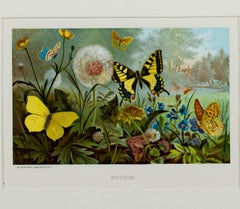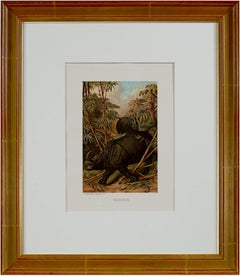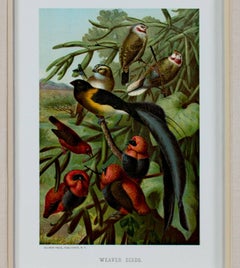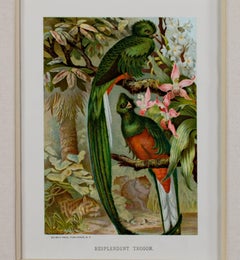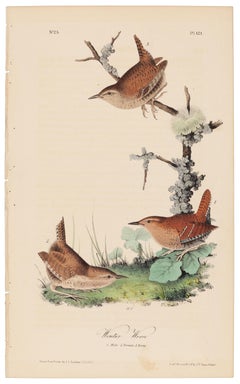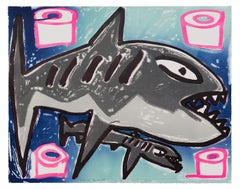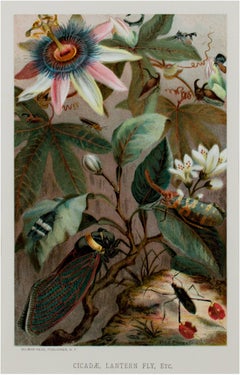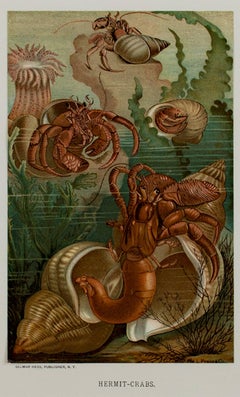Louis Prang Animal Prints
Born on March 12, 1824, Louis Prang was a famous printer, lithographer, publisher and Georgist. His early activities in the U.S. — publishing architectural books and making leather goods — were not very successful, and he began to make wood engravings for illustrations in books. In 1851, he worked for Frank Leslie, art director for Gleason's Pictorial Drawing-Room Companion, and later with John Andrew. In 1851, he married Rosa Gerber, a Swiss woman he had met in Paris in 1846. In 1856, Prang and a partner created a firm, Prang and Mayer, to produce lithographs. The company specialized in prints of buildings and towns in Massachusetts. In 1860, he bought the share of his partner, creating L. Prang and Company, and began work in colored printing of advertising and other forms of business materials. The firm became quite successful and became known for war maps, printed during the American Civil War and distributed by newspapers. In 1864, Prang went to Europe to learn about cutting-edge German lithography. Returning the next year, Prang began to create high quality reproductions of major art works. Prang also began creating a series of popular album cards, advertised to be collected into scrapbooks, showing natural scenes and patriotic symbols.
On Christmas in 1873, Prang began creating greeting cards for the popular market in England and began selling the Christmas card in America in 1874. Therefore, he is sometimes called the "father of the American Christmas card." Prang is also known for his efforts to improve art education in the U.S., publishing instructional books and creating a foundation to train art teachers. Prang was an active supporter of women artists, both commissioning and collecting artworks by women. Many of his lithographs featured works by female artists, such as the botanical illustration of Ellen Thayer Fisher. In 1881, his company employed more than 100 women. In June 1886, Prang published a series of prints under the title Prang's War Pictures: Aquarelle Facsimile Prints. These became popular and helped inspire a genre of such prints, particularly the series issued by Kurz and Allison. However, Prang aimed at a more modern and individual treatment, as opposed to the panoramic style of Kurz and Allison, and before them, Currier and Ives. In 1897, L. Prang and Company merged with another firm, creating the Taber-Prang Company and moved to Springfield, Massachusetts. Prang died in Los Angeles on vacation in 1909.
1880s Academic Louis Prang Animal Prints
Lithograph
Late 19th Century American Realist Louis Prang Animal Prints
Lithograph
1880s Louis Prang Animal Prints
Lithograph
Late 19th Century American Realist Louis Prang Animal Prints
Lithograph
Late 19th Century American Realist Louis Prang Animal Prints
Lithograph
19th Century American Realist Louis Prang Animal Prints
Lithograph
2010s Louis Prang Animal Prints
Lithograph
1970s American Realist Louis Prang Animal Prints
Archival Paper, Lithograph
Early 2000s Contemporary Louis Prang Animal Prints
Thread, Wood, Lithograph, Cotton, Mixed Media
1910s Academic Louis Prang Animal Prints
Woodcut
1940s American Modern Louis Prang Animal Prints
Lithograph
1930s American Modern Louis Prang Animal Prints
Lithograph
1940s American Realist Louis Prang Animal Prints
Lithograph
1920s Academic Louis Prang Animal Prints
Lithograph
1970s American Realist Louis Prang Animal Prints
Lithograph
1920s Academic Louis Prang Animal Prints
Paper, Etching
1980s American Realist Louis Prang Animal Prints
Lithograph
1880s Academic Louis Prang Animal Prints
Lithograph
1880s Academic Louis Prang Animal Prints
Lithograph
1880s Academic Louis Prang Animal Prints
Lithograph
Late 19th Century American Realist Louis Prang Animal Prints
Lithograph

